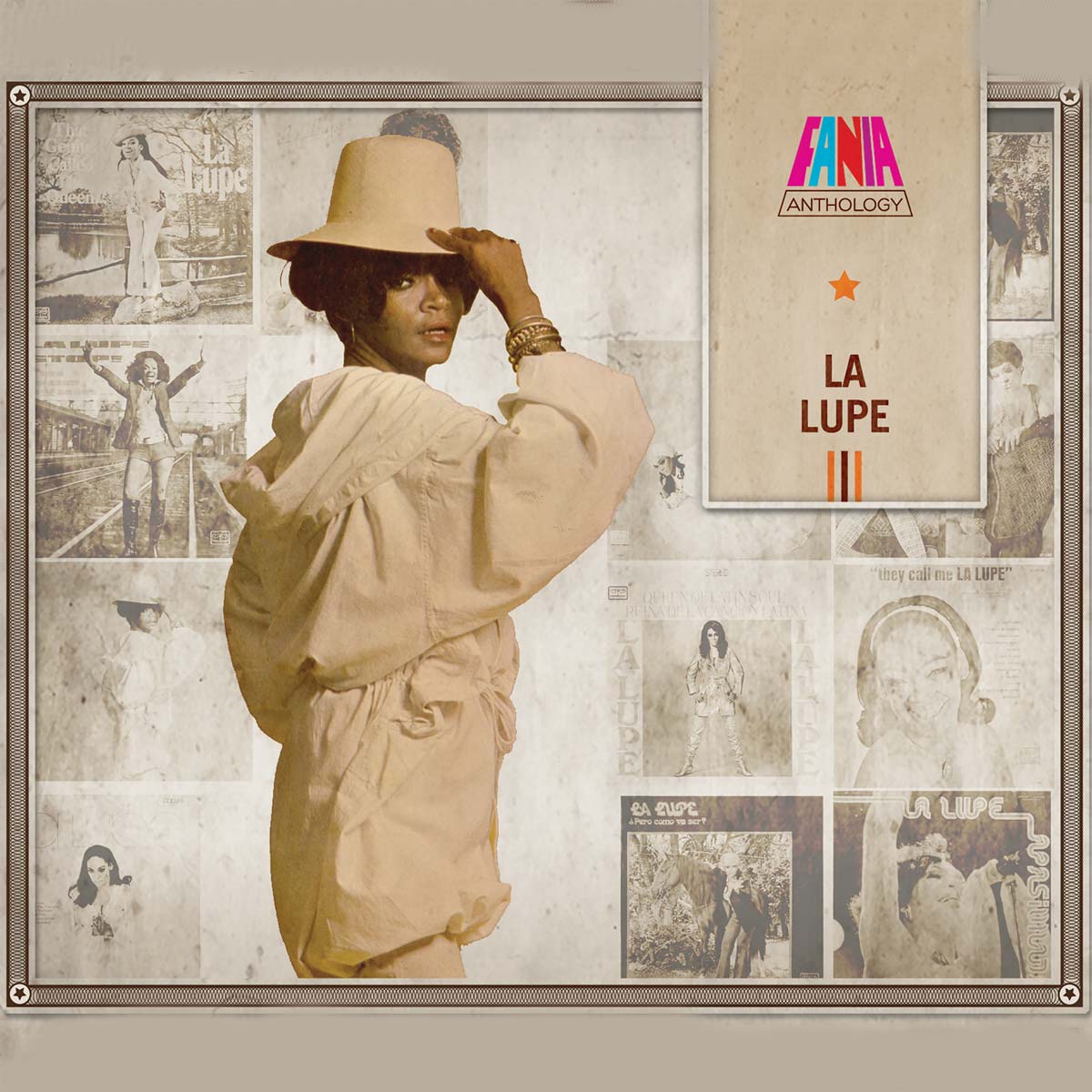
ANTHOLOGY Known as La Lupe or La Yiyiyi, Lupe Victoria Yolí Raymond was born on December 23, 1936, in the neighborhood of San Pedrito, in the Santiago de Cuba province. Her family was poor – her father, Tirso Yolí, worked at a Bacardi distillery. By 1955, her father had decided to move the family to Havana.
At a young age, Lupe ran away from her family and took place in an amateur contest sponsored by the CMQ radio station. She won the first place, impersonating Cuban singer Olga Guillot on the song “Miénteme.” She began her professional career as a singer with the Havana trio Los Tropicuba.
Her first recording was done together with Los Tropicuba for the Panart label, together with Tina del Pilar (singer) and Yoyo Reyes (director and timbales), who was also her first husband. As a solo artist, she recorded in 1960 with Felipe Dulzaides and Eddy Gaetán for the label Discuba-RCA. Her first gold record wasgiven to her by Eliseo Valdez, president of RCA in Cuba. Following the revolution, once that Fidel Castro Ruz was Cuba’s commander in chief, La Lupe was summoned to the CMQ station. She was told that “el lupismo could not become a viable school in contemporary Cuba,” a last warning to leave her homeland right away.
Even though they did not speak Spanish, a number of people from Russia and the U.S. were crazy about La Lupe – they sang “Fidel” during the chorus of “Fever,” angering the revolutionary government. With her belongings in hand, she went to Mexico, and then to New York. Soon enough, Tito Puente hired her as the lead singer with his orchestra. Their debut took place at Club Lowe’s Boulevard Theater. It is well known in the New York entertainment business that, in order to get to the stage of the Carnegie Hall, you need to “practice, practice and practice.” La Lupe was the first Latina to perform in this prestigious venue, as well as the Manhattan Center and Madison Square Garden. La Lupe’s fame was such that Puente was forced to dismiss her when she demanded equal pay as the bandleader himself. La Lupe was a controversial artist.
The fact that she was her own manager and a difficult person to handle had devastating effects on her career. Her attitude and bad temper did not allow her to remain with Tito Puente for long – let alone being invited to perform with the Fania All Stars, when Tico Records was acquired by Jerry Masucci’s Fania Records. This opportunity was given solely to Celia Cruz, sponsored by Masucci, who underestimated La Lupe and Tito Puente himself. An artist who was well ahead of her time, La Lupe was the Madonna of the ‘60s. In 1969, La Lupe was crowned as “Ocanto Mi,” daughter of Ochún in the Yoruba religion from Nigeria. Before beginning one of her shows, La Lupe would soak herself in Pompeya cologne. She would perform a ritual invoking the spirit of Spanish gypsy Carmen Amaya, placing aparrot’s feather in her mouth, standing in front of a plate of honey and a white candle that she would light in her dressing room. Onstage, she was like a hurricane that demolishes everything in its wake. She would beat up the pianist or conga player and throw the timbales’ cymbals to the ground. She had absolute control over her audience, which was intimidated, enraptured and even wept as a reaction to the singing of La Yiyiyi. Her voice touched the inner feelings of the human fiber. Like a madwoman, she would take off her shoes, the scarfs that she wore on her waist and neck, her bracelets – on occasion; she would even throw her bra to the crowd. Her music is venerated in Europe. The song “Puro Teatro” was included in the movie Women on the Verge of a Nervous Breakdown by Academy Award winning Spanish filmmaker Pedro Almodóvar.
Towards the end of her life, Lupe testified about the miracles that Jesus had brought into her life – taking her testimony to a number of churches. La Lupe passed away of a heart attack in the Bronx, New York, on Saturday February 29, 1992. She was 56. Her remains rest at the Saint Raymond’s cemetery in the Bronx, New York.
Liner notes by and album cover photo Richie Viera








